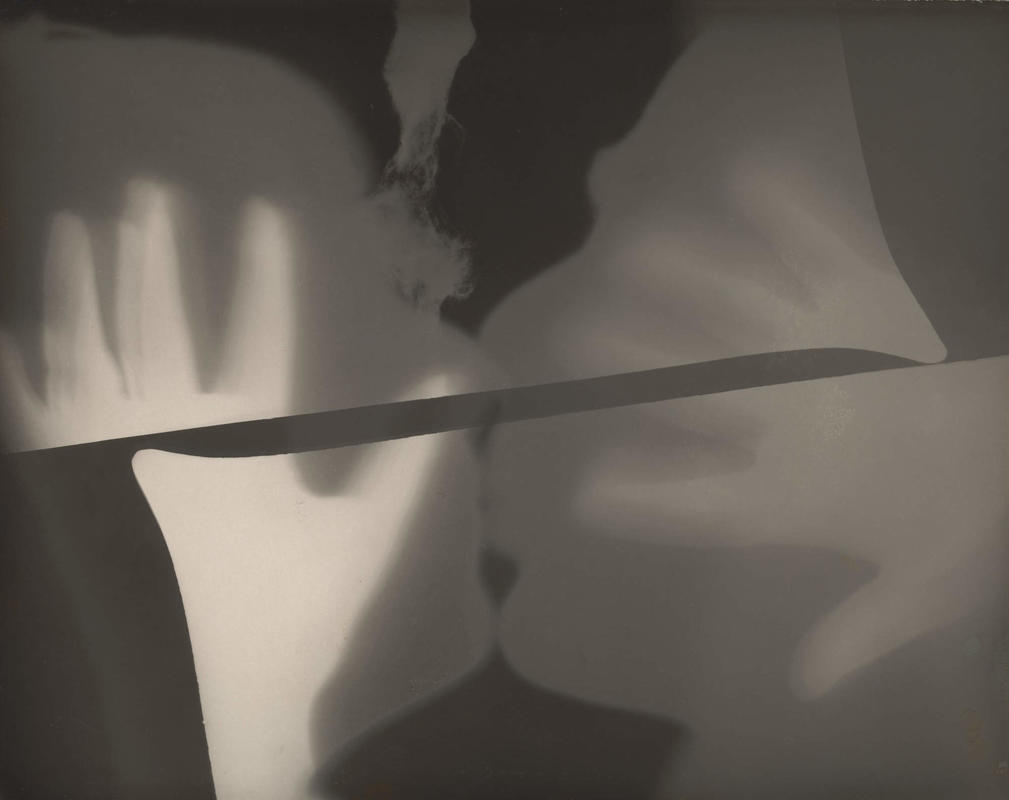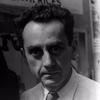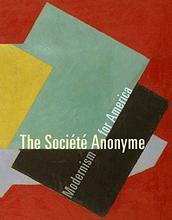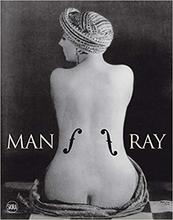More about The Kiss
- All
- Info
- Shop

Contributor
Man Ray's 1922 edition of The Kiss demonstrates a unique artistic (and kissing) technique.
Man Ray practiced narcissism through not only engaging in the traditional practice of self-portraiture but also renaming an entire art technique after himself. Using "rayography," the artist is capable of making photograms, or pictures on photographic paper produced without the aid of a camera. Items are pressed on the paper and exposed to light. The items act as stencils, leaving their imprints lighter than the paper that has been exposed. Each successive exposure leaves the paper darker than before. In The Kiss's case, Man Ray probably exposed it three times—once with a pair of hands, once with a pair of hands, and once with a pair of darkroom trays.
This method has technically existed since the beginning of photography, but Man Ray was the first to repurpose it for fine art. Notable artists who have since adopted this process include Robert Rauschenberg and the botanist Anna Atkins, who elevated the silhouettes of found objects into their own art form. Photograms appear representational yet abstract, straight-forward yet mysterious. All the process takes is light, a subject, and some hands-on work.
Speaking of hands, The Kiss, one of Man Ray’s most famous rayograms, brings physical contact to a deeper, subdermal level. There’s nothing more romantic than making out with two hands wedged in your head.
Man Ray once stated, “I would photograph an idea rather than an object, a dream rather than an idea." His rayograms influenced Dadaists to view the world differently and inspired Surrealists like Rene Magritte and Salvador Dali to translate their dreams into artistic reality. “Weird” (in its most derogatory form) did not exist—only the “undefined.”
As the wingman of Marcel Duchamp, Man Ray also bore first-hand witness to the gender-fluid innovator’s fluctuation between his daring female alter-ego, Rrose Sélavy, and his original male self. Man Ray may have composed The Kiss after the idea that sexuality was not as black and white as most people believed, but as ambiguous a preference as the figures in his print. The identity of either smoocher matters close to none when you consider that they could be anyone, regardless of which parts lie further south.
Then again, like sitting on the copy machine and making photocopies of one’s rear, Man Ray may have taken an “anything goes” approach to his revolutionary medium. If you’re making history, why not start with a kiss?
Sources
- "Man Ray | Rayograph." The Metropolitan Museum of Art, i.e. The Met Museum. http://www.metmuseum.org/art/collection/search/265487.
- "Man Ray (Emmanuel Radnitzky). Rayograph. 1922 | MoMA." The Museum of Modern Art. https://www.moma.org/collection/works/46405?locale=en.













